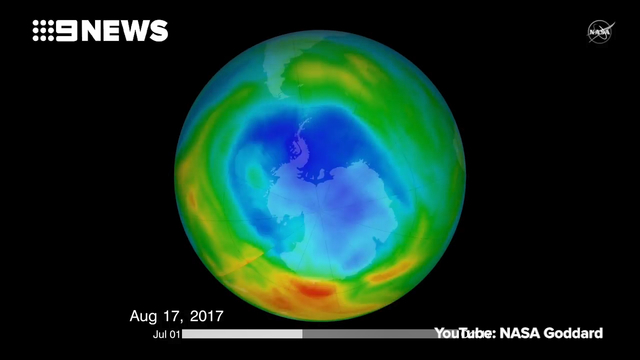A new report released by United Nations Global Nitrous Oxide Assessment has warned that nitrous oxide (N₂O), a potent greenhouse gas, is rapidly accelerating climate change and damaging the ozone layer.
The report was launched on Tuesday at the 2024 UN Climate Change Conference (COP29) in Baku, Azerbaijan, the assessment signals that emissions are rising faster than expected, and that immediate action is required to curb the environmental and health impacts of this super pollutant.
A statement released by UNEP said Nitrous oxide is approximately 270 times more potent than carbon dioxide in terms of warming the planet, and currently responsible for approximately 10 per cent of net global warming since the industrial revolution.
It said primarily emitted from agricultural practices such as the use of synthetic fertilizers and manure, N₂O is the third most significant greenhouse gas and the top ozone-depleting substance still being released into the atmosphere.
- Smuggling: Customs intercepts 191 gallons, trucks of fuel in Kwara
- IMF, World Bank determined to bury Nigeria’s public varsities — ASUU
The findings from the Assessment are clear that urgent action on N₂O is critical to achieving climate goals, and without a serious reduction in emissions, there is no viable path to limiting warming to 1.5°C in the context of sustainable development as outlined in the Paris Agreement.
“Abating N₂O emissions could avoid up to 235 billion tonnes of CO₂-equivalent emissions by 2100,” said David Kanter, Associate Professor of Environmental Studies at NYU and Co-Chair of the Assessment. “This is equivalent to six years’ worth of current global carbon dioxide emissions from fossil fuels.”
This Assessment identifies practical, cross-sectoral abatement strategies that could cut N₂O emissions by more than 40 per cent from current levels.
The statement said by transforming food production systems and rethinking societal approaches to nitrogen management, even deeper reductions could be achieved, offering a critical opportunity to move the world closer to its climate, environmental, and health goals.
It also shows that N₂O emissions from the chemical industry can be quickly and cost-effectively abated; agricultural and industrial practices impact the natural nitrogen cycle, leading to increased N₂O emissions.
A Chemist and atmospheric scientist, Colorado State University, and Co-Chair of the Assessment, A.R. Ravishankara, said: “A sustainable nitrogen management approach not only reduces nitrous oxide emissions but also prevents the release of other harmful nitrogen compounds,.”
“This could improve air and water quality, protect ecosystems, and safeguard human health, all while maintaining food security.,” he said.
Nitrous oxide is currently the most significant ozone-layer depleting substance being emitted into the atmosphere.
The Assessment shows that proactively tackling N₂O would also support the continued recovery of the ozone layer, helping to avoid a future where much of the global population is exposed to harmful UV levels.
Executive Secretary of the Montreal Protocol Ozone Secretariat, Megumi Sek said: “The ozone layer is crucial for all life on Earth. For decades, parties to the Montreal Protocol have worked hard to safeguard it. This Assessment highlights the need for continued vigilance, commitment and action for the ozone layer to recover as soon as possible to its pre-1980 levels.”
“This Assessment sounds the alarm on a relatively forgotten super pollutant that contributes greatly to climate change and air pollution,” said Martina Otto, Head of Secretariat of the UNEP-convened Climate and Clean Air Coalition.
“By using the abatement tools highlighted in the Assessment that are already available to us, we can yield multiple benefits across climate, clean air, and health” she added.
Simultaneously reducing nitrogen oxide emissions and ammonia would also significantly improve air quality, potentially avoiding up to 20 million premature deaths globally by 2050. Abatement measures would also enhance water quality, improve soil health, and protect ecosystems from

 Join Daily Trust WhatsApp Community For Quick Access To News and Happenings Around You.
Join Daily Trust WhatsApp Community For Quick Access To News and Happenings Around You.


